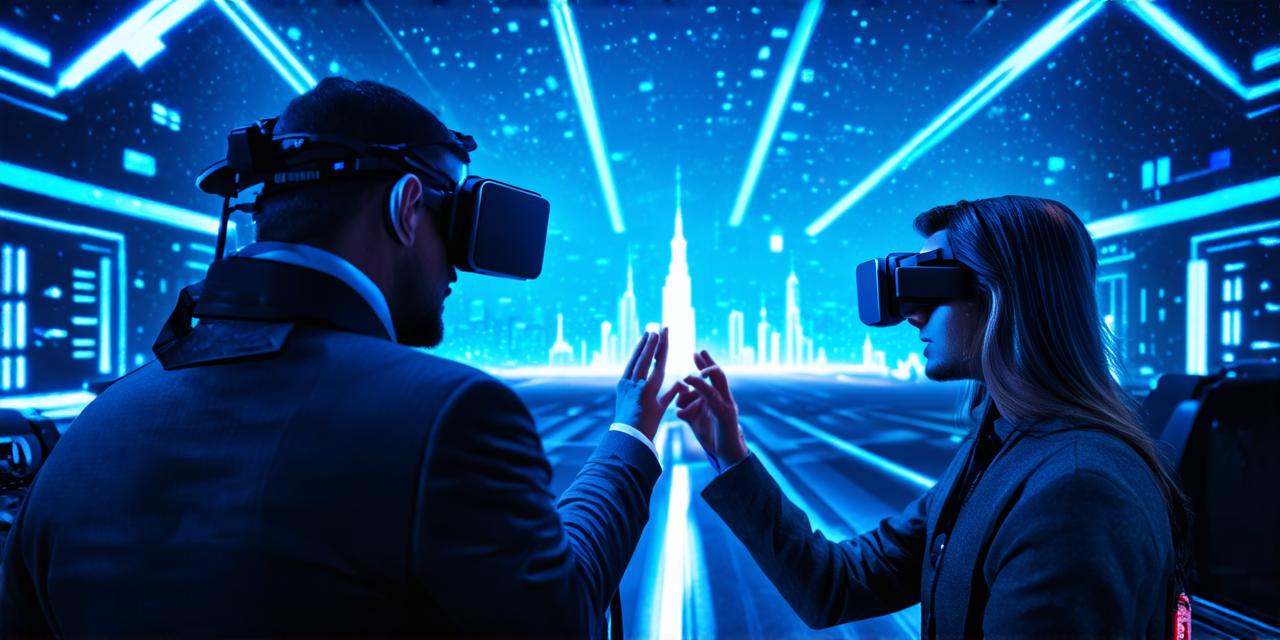Virtual reality (VR) technology has revolutionized the way we experience immersive environments and interact with digital objects. As VR continues to advance, one of the critical factors that determine the quality of the experience is the frame rate of a virtual reality headset.
What is Frame Rate?
Frame rate refers to the number of frames per second (fps) that are displayed on the screen of a virtual reality headset. It is an indicator of how smoothly and seamlessly a VR experience will run. A higher frame rate means more fluid motion, resulting in a smoother and more immersive experience for the user.
For instance, imagine watching a movie with a low frame rate. The images would flicker on and off, making it difficult to follow the storyline. Similarly, in VR, a low frame rate can cause motion sickness, nausea, and headaches, ruining the immersive experience.
The Impact of Frame Rate on Virtual Reality Experiences
Virtual reality experiences require a high frame rate to provide a smooth and seamless user experience. The frame rate determines how often the VR headset updates its display, which affects the user’s perception of motion and depth in the virtual environment.
A lower frame rate can make the virtual world appear choppy and unrealistic, leading to a negative impact on the user’s immersion level. On the other hand, a higher frame rate provides a smoother experience, resulting in a more realistic and immersive environment for the user. It also reduces motion sickness and nausea, making it easier for users to engage with the virtual world for longer periods.
Factors that Affect Frame Rate in VR
Several factors can affect the frame rate of a virtual reality headset, including:
- Hardware Specifications: The performance of the hardware used to run the VR application affects the frame rate. High-end computers with powerful graphics cards are more capable of rendering high frame rates than lower-end systems.
- Software Optimization: The optimization of software can also affect the frame rate. Developers need to ensure that their virtual reality applications are optimized for the target hardware, as this will result in a smoother experience and higher frame rates.
- Environment Complexity: The complexity of the virtual environment affects the frame rate. A more complex environment with many objects and textures requires more processing power, resulting in lower frame rates.
- User Movement: User movement can also affect the frame rate. If the user is moving quickly through a complex environment, it can cause lag and reduce the frame rate, leading to a negative impact on the immersion level.
- Tracking Accuracy: The accuracy of tracking devices used in VR headsets can affect the frame rate. Inaccurate tracking can result in movement artifacts and make it difficult for the system to keep up with user movements, reducing the frame rate.
Case Studies: Understanding Frame Rate in Real-World Scenarios
Several case studies demonstrate the importance of understanding frame rate in virtual reality development. For example:
- Oculus Quest 2 vs. HTC Vive Pro Eye: The Oculus Quest 2 has a lower refresh rate of 90 Hz compared to the HTC Vive Pro Eye’s higher refresh rate of 120 Hz. This difference is noticeable in terms of motion sickness and immersion level. Users have reported less motion sickness and nausea when using the HTC Vive Pro Eye, making it a preferred choice for some users.
- Medical Training: In medical training, high frame rates are essential to provide an accurate representation of complex procedures. For example, surgeons need to see every detail of a patient’s anatomy in real-time to make informed decisions during surgery. A lower frame rate can lead to errors and complications during the procedure.
- Gaming: In gaming, high frame rates are crucial to provide a smooth and immersive experience. Games with low frame rates can cause lag, making it difficult for players to engage with the game effectively. Developers need to ensure that their games are optimized for the target hardware to provide a seamless gaming experience.
Expert Opinions: What the Experts Say About Frame Rate in VR
Several experts have shared their opinions on the importance of frame rate in virtual reality development. For example:
